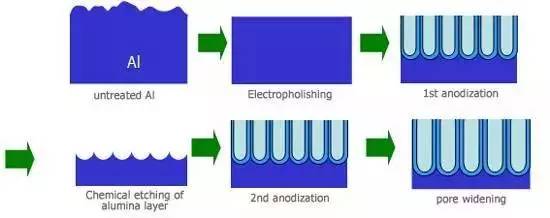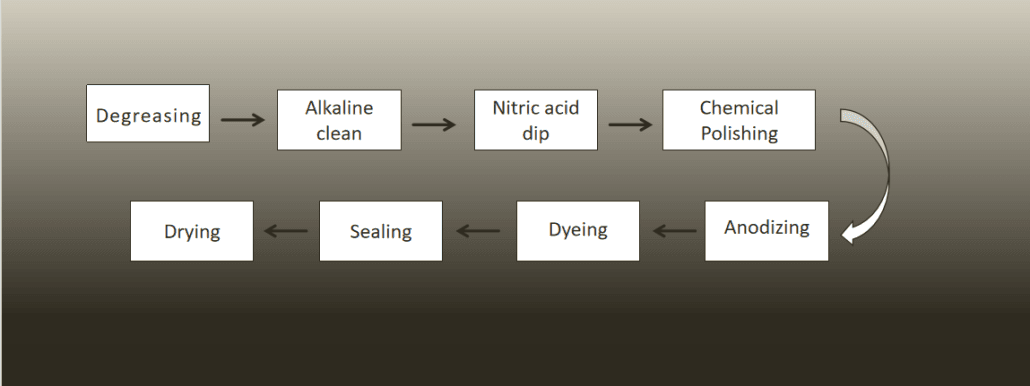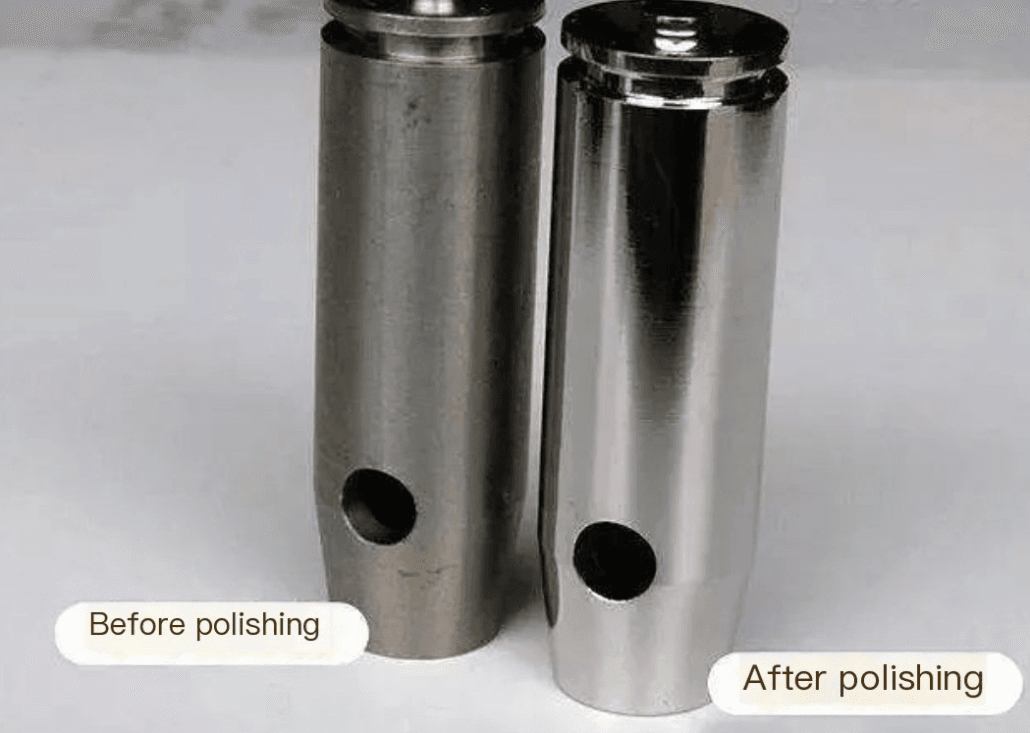Metal finishing is a fascinating process that takes ordinary pieces of metal and transforms them into something extraordinary. It’s like giving your car a fresh coat of paint, but for all things metal! These techniques are applied to enhance the appearance, durability, and functionality of metal components, making them suitable for a diverse array of applications.
Introduction
This article explores the world of metal finishing, its types, and its applications, shedding light on the importance of this essential industrial practice.

A Glimpse into the History of Metal Finishing
The roots of metal finishing can be traced back thousands of years, as human civilizations began to work with metals. Early examples of metal finishing techniques can be found in ancient jewelry, coins, and weaponry, where skilled artisans employed processes such as polishing, engraving, and inlay to create intricate and ornate designs.
One of the most significant breakthroughs in the history of metal finishing occurred with the discovery and widespread use of electroplating in the 19th century. Electroplating, which involves the deposition of a thin layer of metal onto a substrate using an electrical current, revolutionized the industry. It allowed for the application of a wide range of metals, including gold, silver, nickel, and chrome, onto various materials, such as steel, brass, and copper. This technological advancement marked the beginning of a new era in metal finishing, where not only aesthetics but also corrosion resistance and other functional properties could be controlled with precision.
What is Metal Finishing?
So, what exactly is metal finishing? Metal finishing, also known as surface finishing. In simple terms, it’s a series of processes that improve the surface of metal objects. This can involve applying a variety of chemical, mechanical, or electrochemical treatments to the metal’s surface.Whether it’s a shiny new car, a sleek smartphone, or a stylish piece of furniture, we love things that look good. Metal finishing can turn a dull, rough metal surface into a smooth, lustrous masterpiece.
Metal finishing ensures that the metal can withstand the harsh elements, resist wear and tear, and last longer.
Types of Metal Finishing Processes
Surface finishing refers to the formation of a surface layer with one or more special properties on a material surface through physical or chemical methods. Surface finishing can improve the appearance, texture, functionality, and other aspects of product performance.Below are a few of the types of finishing processes available:
1.Powder Coating

The working principle of powder coatings is almost identical to the spraying method of general liquid coatings, except that powder coatings are dispersed rather than atomized.
The powder coating process emerged in the 1960s and was mainly applied to metal surface coating. In the late 1990s, with the development of powder coatings and spraying equipment, it became possible to apply powder coating technology to non-metallic surfaces.
Types of Metals Used for Powder Coating
Here are some of the most common types of metals used for powder coating:
1.Steel
2.Aluminum
3.Bronze
4.Copper and Brass
5.Galvanized Metal
6.Magnesium
Powder Coating Process flow
The process of powder coating is the same as the painting process except that the paint is a dry powder and not a liquid. The powder adheres to the parts because of electrostatic charging happening to powder and the grounding of the parts.
Upper part → Electrostatic dust removal → Powder coating → Low temperature leveling → Baking

2.Anodizing

The anodizing process involves invading aluminum parts into an electrolyte solution and allowing current to flow through the solution, which leads to oxidation on the surface of the aluminum parts, forming a hard and porous alumina layer on the metal surface. The resulting alumina layer serves as a protective barrier, preventing further erosion and providing good durability and wear resistance.
At the beginning of the order, the customer can specify the thickness of the anodized coating on the aluminum parts, so that the aluminum parts can achieve the desired smoothness or no glossiness. CNC machining manufacturers need to have precise control over accuracy and details to ensure that the layers are uniform and defect free. At Longsheng, customers’ metal parts are thoroughly cleaned before undergoing anodizing processes, and the current is carefully controlled to ensure that the thickness specified by the customer can be achieved, perfect for the customer’s usage scenarios.
Types of Metals Used for Anodizing
Here are some of the most common types of metals used for anodizing:
1.Aluminum Alloys
2.Aluminum (Al)
Anodizing Process flow
Before anodizing, pre-treatments such as polishing, degreasing, and cleaning are required, followed by flushing, coloring, and sealing.

Single color, gradient color: polishing/sandblasting/wire drawing → degreasing → anodizing → neutralization → dyeing → sealing → drying
Dual color: polishing/sandblasting/wire drawing → degreasing → shielding → anodizing 1 → anodizing 2 → sealing → drying
Difference between anodic oxidation and conductive oxidation
1) Anodizing is carried out under the condition of high voltage electricity, which is an electrochemical reaction process; Conductive oxidation (also known as chemical oxidation) does not require electricity, but only needs to soak in the liquid on the line, it is a pure chemical reaction.
2) Anodic oxidation takes a long time, often a few minutes to tens of minutes, while conductive oxidation only takes a short tens of seconds.
3) The film generated by anodic oxidation has several microns to dozens of microns, and is hard and wear-resistant, while the film generated by conductive oxidation is only 0.01 to 0.15 microns. The wear resistance is not very good, but it can conduct electricity and resist atmospheric corrosion, which is its advantage.
4) The oxide film is originally non-conductive, but because the film generated by conductive oxidation is really very thin, it is conductive.
3.
3.Polishing
Polishing refers to the use of mechanical, chemical or electrochemical action to reduce the surface roughness of the workpiece in order to obtain a bright, flat surface processing method. Polishing process has a long history, in ancient times, people polished stone tools, jade and so on, in modern industrial society in order to get a beautiful product appearance, polishing process is more widely used in all walks of life.
Polishing type
Different methods can be selected according to different needs, the following are several common methods of polishing process.
Electrolytic polishing

Electrolytic polishing is also known as electrochemical polishing, electrolytic polishing can be used to prepare the surface of the parts before electroplating, but also for finishing the surface after plating, and can also be used as an independent finishing processing method for the metal surface.
However, electrolytic polishing is not suitable for metallographic samples of metals with uneven chemical composition and severe microsegregation and non-metallic inclusions of metal substrates, and electrolytic polishing is not suitable for samples embedded with plastics, because electrolytic polishing will cause serious local corrosion.

Chemical polishing
Chemical polishing is a process of surface dissolution. The selective dissolution of chemical reagents on the uneven areas of the sample surface can eliminate wear marks, etch and smooth the method. The sample can be viewed directly under the microscope after chemical polishing. It can handle small tubes, parts with deep holes and complex shapes.
The surface roughness obtained by chemical polishing is generally 10μm.
Mechanical polishing
Mechanical polishing by cutting, plastic deformation of the surface of the material to remove the polished convex and get a smooth surface, the general use of stone bar, wool wheel, sandpaper, etc., mainly manual operation, need to be carried out in the special polishing machine, polishing machine is mainly composed of a motor and driven by one or two polishing discs, the speed of 200~600d/min, The polishing disc is covered with polishing cloth of different materials.
Mechanical polishing can make the metal surface roughness value Ra=0.3~3.0μm
Types of Metals Used for Polishing
Here are some of the most common types of metals used for polishing:
1.Stainless Steel
2.Aluminum
3.Nickel
4.Brass
5.Copper
4.Passivation
Commonly used for stainless steel, passivation removes free iron from the surface to prevent corrosion. It’s like a detox cleanse for your metal, getting rid of impurities that could harm it.
Types of Metals Used for passivation
1.Stainless Steel
2.Aluminum
3.Titanium
4.Brass and Bronze
5.Carbon Steel
Like chromium, nickel, cobalt, titanium, zinc, iron and other metals have passivation properties, passivation oxidants are chromic acid, potassium permanganate, potassium chlorate, acetic acid, boric acid and citric acid. Passivation treatment can greatly reduce the corrosion rate of metal and increase the corrosion resistance of metal.
Passivation process flow

The passivation process typically involves cleaning the metal’s surface to remove contaminants and then exposing it to an oxidizing agent, such as nitric acid, citric acid, or other passivation solutions. The specific method and solution used can vary based on the metal, the application, and the desired level of corrosion resistance. It’s important to follow industry-specific standards and guidelines when passivating metals to ensure proper and effective corrosion protection.
Post-treatment includes rinsing, water, drying, sealing and packaging, etc. This step is to clean the defects on the surface of the workpiece, ensure product quality, and prepare for product shipment.
Applications and Advantages of Metal Finishing
This chapter will discuss the applications and benefits of metal finishing.Here’s a look at some of them:
Applications of Metal Finishing
Metals have a large number of applications in many industries. The applied coating helps to prevent any chemical reactions from occurring.
Automotive Industry
It enhances the appearance and durability of car parts, such as chrome-plated bumpers, polished wheels, and decorative trim. Anodizing and powder coating also protect undercarriage parts from corrosion.
Aerospace Industry
Aircraft and spacecraft require high-performance materials that can withstand extreme conditions. Metal finishing, such as anodizing and specialized coatings, is used to protect and enhance the surfaces of aerospace components, ensuring they can endure the challenges of flight.
Electronics
The sleek and attractive appearance of electronic devices, such as smartphones and laptops, is often achieved through metal finishing. This enhances not only the aesthetics but also the durability of these gadgets.
Jewelry
Many jewelry items are created using metal finishing techniques to achieve a polished, reflective, and eye-catching appearance. Techniques like polishing, plating, and surface treatments are applied to precious metals and gem settings.
Advantages of Metal Finishing
The use of metal finishing has many advantages, such as wear resistance.Here’s a look at some of them:

Corrosion Resistance
Metal finishing methods, particularly anodizing and specialized coatings, create protective layers that shield metal from corrosion and extend its lifespan.
Enhanced Aesthetics
Metal finishing can transform dull and rough metal surfaces into smooth, shiny, and aesthetically pleasing objects, improving their visual appeal.
Customization and Versatility
Metal finishing provides a wide array of options for customization, allowing manufacturers to choose specific finishes to match their desired aesthetic or functional requirements.
Enhanced Electrical Conductivity
Some metal finishing techniques, like gold plating, improve electrical conductivity, making them valuable for electronics and electrical components.
Environmental and Safety Considerations
While metal finishing has numerous benefits, it’s essential to be mindful of its environmental impact. Many of these processes involve chemicals and waste materials that can harm the environment. That’s why there are strict regulations in place to ensure that the metal finishing industry operates safely and responsibly.
Efforts are also being made to develop more environmentally friendly processes and materials. For example, water-based coatings are gaining popularity as they are less harmful to the environment compared to solvent-based coatings.
Choose the appropriate metal finishing process
Here are some common scenarios and the corresponding metal finishing processes:
1.Corrosion Resistance for Steel Structures:
Appropriate Process: Galvanizing
Reason: Galvanizing involves coating steel with a layer of zinc, providing excellent corrosion resistance for steel structures in outdoor or marine environments.

2.Decorative Finish for Brass Hardware:
Appropriate Process: Polishing and Electroplating (e.g., nickel or chrome)
Reason: Polishing followed by electroplating can create a shiny, decorative finish on brass hardware, enhancing its appearance.
3.Identification Marks on Stainless Steel Medical Devices:
Appropriate Process: Laser Marking
Reason: Laser marking provides permanent and precise marks on stainless steel without affecting its corrosion resistance, making it suitable for medical devices.
4.Clean and Smooth Surface for Aerospace Components:
Appropriate Process: Abrasive Blasting followed by Passivation
Reason: Abrasive blasting can prepare the surface, followed by passivation to improve corrosion resistance and maintain cleanliness.
Choosing the correct metal finishing process is complex, and manufacturers and enterprises should collaborate with experienced metal processing experts to develop customized and cost-effective metal finishing processes to reduce operating costs, simplify production, and provide enhanced final metal products that exceed customer expectations.
conclusion
Metal finishing is essential in various industries,proper metal finishing can significantly enhance the performance, longevity, and appearance of the metal products.Longsheng has been providing reliable metal finishing solutions. Please contact us to learn more about our industrial metal finishes.


